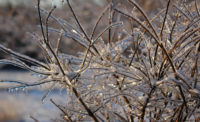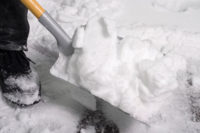 When Mother Nature whips up a wicked winter wind-chill factor it creates a real health risk for outdoor workers if they don’t take precautions against what OSHA calls “cold stress:” hypothermia, frostbite, and trench foot—a nonfreezing injury to wet, cold feet.
When Mother Nature whips up a wicked winter wind-chill factor it creates a real health risk for outdoor workers if they don’t take precautions against what OSHA calls “cold stress:” hypothermia, frostbite, and trench foot—a nonfreezing injury to wet, cold feet.
Hyperthermia occurs when body temperature dips from the normal 98.6 degrees to less than 95.
Symptoms range from shivering, to confusion, to loss of consciousness, and even death.
Hands or feet freeze with frostbite can be a threat even when temperatures are above freezing because of wind chill. You’ll know someone is in trouble if his or her skin blisters, displays gray or white patches, or feels hard.
Trench foot or immersion foot can occur when the air temperature is as high as 60 degrees when someone’s feet are constantly wet. Symptoms include swelling, numbness, and blisters.
How to prevent it
The best prevention is training, OSHA suggests, so that workers know the symptoms and can react or seek treatment before they get worse. In addition, OSHA asks that job sites have radiant heaters on job sites during cold weather, and that supervisors monitor workers and schedule regular breaks in warm areas.
Here are some tips from OSHA’s cold-weather Quick Card:
- Drink warm, sugary beverages—but no alcohol—while working outdoors.
- Dress in layers or loose-fitting clothing. If it’s waterproof, all the better. Cover the body from head to toe—except the face. A tip: Plastic garbage bags do a good job of blocking the cold.
- Move anyone who shows symptoms to a warm place.
- Change out of wet clothes and boots immediately.
- Call 911 if someone displays serious symptoms.
Source: OSHA


